Science of whaling
Is there such a thing as sustainable whale hunting? And even if there is, are we likely to see an end to the moratorium on commercial whaling. We find out in this first episode of a brand new series of Naked Oceans as we dive into the issues surrounding whaling. We pay a visit to the International Whaling Commission to find out the latest on whale research and management. And we venture into the past to the heyday of global whaling and discover how whaling ship logs from hundreds of years ago are offering vital insight into the changing climate. And Wallace J. Nichols launches our new series of Critter of the Month with a long distance migrant on a fascinating journey...
In this episode
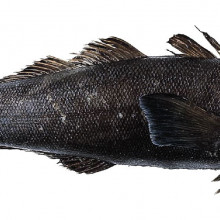
01:20 - When is a sustainable fish not a sustainable fish?
When is a sustainable fish not a sustainable fish?
If you're concerned about the plight of fish stocks, but still like to eat fish, you might tend to choose fish marked with the Marine Stewardship Council logo as having come from 'sustainable' fish stocks when you go to the supermarket.
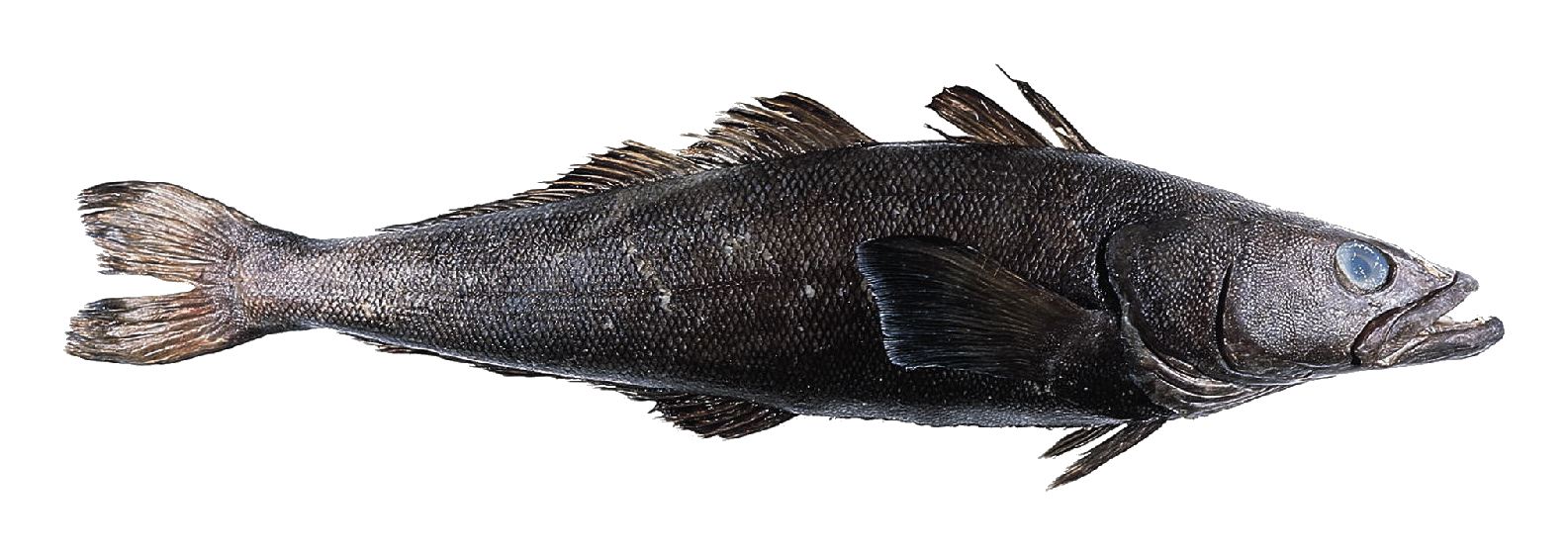 But can you be sure that fish that has come from so called 'sustainable' fish stocks has really come from there? Well, a rather worrying study by Peter Marko at Clemsen University in the States and his colleagues, has shown that in the case of one species, the Chilean Sea bass, not all of the samples tested actually came from the sustainable fishery region as designated by the MSC.
But can you be sure that fish that has come from so called 'sustainable' fish stocks has really come from there? Well, a rather worrying study by Peter Marko at Clemsen University in the States and his colleagues, has shown that in the case of one species, the Chilean Sea bass, not all of the samples tested actually came from the sustainable fishery region as designated by the MSC.
The fish that is sold as 'chilean sea bas' is actually a species called the Patagonian toothfish, or Dissostichus eleginoides. These fish can only receive the MSC stamp of approval if they were caught in the South Georgia/Shag Rocks fishery, in the Southern Ocean, close to Antarctica.
So Marko and his colleagues set out to genetically test samples of Chilean sea bass bought in supermarkets to see if they really did come from this fishery by comparing their DNA to DNA results of a previous study that looked directly at fish caught in the South Georgia/Shag Rocks fishery. The population of Patagonian toothfish in this area is relatively isolated, and the fish are slow growing, so they are quite genetically distinct. They extracted DNA from the fish samples, amplified it and cut it with restriction enzymes before running it on an agarose gel. The digestion pattern of the samples were compared with patterns found in the previous study.
They found that 5 of the 33 samples were Patagonian toothfish did not match the genetic profile of the South Georgia/Shag Rocks fishery, and that 3 of the 33 samples were not Patagonian toothfish at all, but were actually tuna, mackerel or greenling.
The authors argued that this was due to mislabelling at some point in the chain from the fishermen to supermarket, and wasn't due to genetic shifts in the population, given they're so slow growing. It's a worrying finding, because consumers may believe they are making sustainable choices whereas in fact they unknowingly create demand for uncertified fisheries, which goes against the whole idea of MSC labelling.
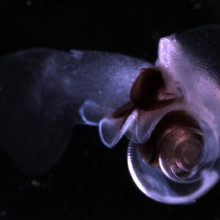
04:41 - Acidic seas spell bad news for sea butterflies
Acidic seas spell bad news for sea butterflies
Thecosome pteropods, also known as sea butterflies, are an important group of ocean wanderers that may disappear from northern oceans by the end of century as the oceans become more acidic, removing a key food source for Arctic fish, birds and whales.
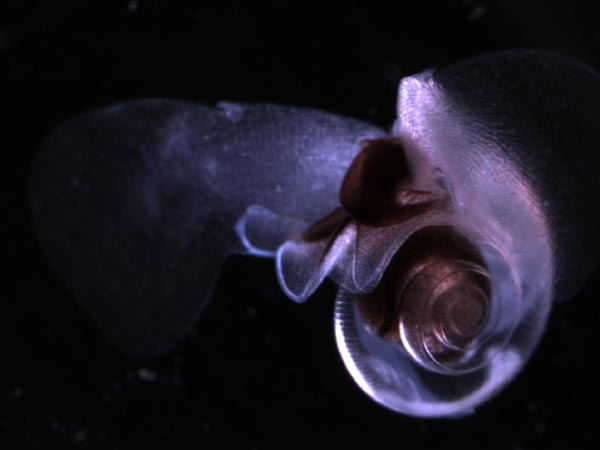 One of the major threats facing the oceans is acidification - with increasing levels of carbon dioxide in the atmosphere, more of the gas is dissolving the oceans, leading to a lowering of pH and a reduction in the concentration of carbonate ions. And that's going to make life difficult for the many marine species that use these ions to build calcium carbonate shells, including sea butterflies.
One of the major threats facing the oceans is acidification - with increasing levels of carbon dioxide in the atmosphere, more of the gas is dissolving the oceans, leading to a lowering of pH and a reduction in the concentration of carbonate ions. And that's going to make life difficult for the many marine species that use these ions to build calcium carbonate shells, including sea butterflies.
They're closely related to the sea angels that featured in our Christmas show last year - you might remember the shelless molluscs that produce bad-tasting chemicals to defend themselves from attack. The main difference for the sea butterflies is that they protect themselves with a shell made from a relatively unstable form of calcium carbonate called aragonite.
Publishing in the Proceedings of the Royal Society B, the research team led by Steeve Comeau from the CNRS-INSU ocean laboratory in Villefranche-sur-Mer, in France, studied 2 sea butterflies - Limacina helicina from the Arctic, and Creseis acicula from the Mediterranean.
They combined lab studies of sea butterfly growth rates at different concentrations of carbonate ion with models of future changes in ocean chemistry based on projections from the IPCC (Intergovernmental Panel on Climate Change). And they found that in large parts of the Arctic, Limacina helicina will be unable to form shells by the end of the century.
Could Limacina live without a shell? Probably not. While some sea butterfly larvae do seem to be able to survive for some time without shells, Limacina would be left highly vulnerable to attack by predators and it would disrupt their buoyancy control - every day they undergo huge vertical migrations up and down the water column, it's thought to avoid the attention of predators during the day. And their shells are also important for keeping their soft body parts in place.
And if sea butterflies were to disappear from the Arctic, it could spell disaster because they play a vital role in the food web of pelagic ecosystems, forming the staple food source for many fish, birds and whales.
So, if these models play out, then this will be yet another major shift in ocean ecosystems, in a warmer, more acidic world.
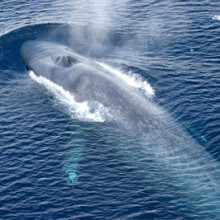
08:40 - Science and management of whale hunting
Science and management of whale hunting
with Simon Brockington and Greg Donovan, International Whaling Commission
Helen - Cambridge isn't necessarily the sort of place you would associate with the oceans, but I've hopped on my bike, cycled a couple of miles outside the city centre, and I've come to meet a group of people who are charged with looking after the biggest animals that roam the oceans. I've come to the headquarters of the IWC, the International Whaling Commission.
Simon - The IWC is a collection of governments that come together to conserve whale stocks and manage whaling.
Helen - I met up with secretary of the IWC, Simon Brockington.
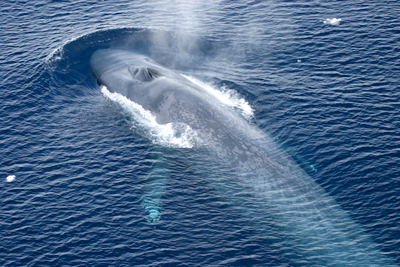 Simon - You can trace its origins to back before WWII but the convention that empowers the IWC was signed in 1946. Since that time there's been some major changes. Back in the early days, in the late 40s, there were 15 contracting governments, all of them pursued whaling interests. And of course as we all know as the decades have rolled by, public attitudes towards whaling have changed, and also the attitudes of the contracting governments themselves have changed.
Simon - You can trace its origins to back before WWII but the convention that empowers the IWC was signed in 1946. Since that time there's been some major changes. Back in the early days, in the late 40s, there were 15 contracting governments, all of them pursued whaling interests. And of course as we all know as the decades have rolled by, public attitudes towards whaling have changed, and also the attitudes of the contracting governments themselves have changed.
So what we have now is a very much larger commission. Total membership now is 89 contracting governments and there's a huge diversity of views expressed amongst those governments.
A number wish to continue commercial whaling. Others wish to pursue whaling for nutritional purposes, particularly for indigenous or aboriginal communities. And many other wish to promote the conservation of whale stocks particularly for uses other than hunting, to support industries such as whale watching.
Helen - Joining us head of science at IWC, Greg Donovan.
Greg - Originally, real whale science began actually in association with the whaling industry. Whatever one thinks about that, the sample sizes were very large, and in general quite a number of scientists took advantage of being on whaling boats to look at anatomy, that kind of thing.
And in indeed some of the famous biologists such as Scoresby were actually whaling captains who got interested in biology rather than the other way round.
Helen - A major part of the IWC's work is conducting and coordinating whale research. They've found, for example, that for many whale species, numbers are recovering thanks at least in part to the current moratorium on commercial whaling, which has been in place since the 80s, although there are still some populations that are in danger, and many mysteries remain.
And its that great unknown - of those illusive animals that live their lives in the dark depths - that poses a challenge to the IWC scientists who've taken on the task of working out what levels of whale hunting could, theoretically, be allowed without threatened the future of whale populations.
Greg - It's really not a good idea to experiment in the wild, that's what happened with whale populations and that's one of the reasons they crashed. So rather than do real work we use computer whales. I won't tell you how many millions of whale populations we've brought to extinction in our experimental work.
with whale populations and that's one of the reasons they crashed. So rather than do real work we use computer whales. I won't tell you how many millions of whale populations we've brought to extinction in our experimental work.
So effectively what we do is we simulate whale populations and we build in huge amounts of uncertainty. For example, we say, what if the environment is changing in such a way that we have increased amounts of disease or a population might at random rash by half. We don't know, but we'd have to test for that.
What we have to do is come up with an approach within this uncertainty still means the populations meets the conservation objectives, i.e. remains increasing or towards the level that is chosen which is around about 72% of its carrying capacity of initial population size.
The way the system works, and it is possible to do it, should you want to do it, is such that in the beginning while you're learning more about the population, it's incredible conservative. For example, if you had a population of around 10,000, in the beginning the catch that would be allowed would be less than 50.
As the procedure learns more because you have more abundance estimates, then the catch limits might go up. When we do our simulations for sustainability we're not saying this is whaling, we're saying this is all human-induced mortalities. The process that we used to allow us to determine what would be sustainable in terms of whaling also allows us for some of these other populations which are in serious trouble where the catch limit would we zero, we know that, wouldn't allow whaling of any kind on it. But that doesn't ship strikes aren't happening, it doesn't mean that bycatch in fishing gear aren't happening. From a populations dynamics point of view it doesn't matter what the motive behind the removal is, it's just a removal.
If you do the right level of work and you're honest as a scientist and accept the uncertainty, and you continue to monitor so you don't think you've got it right, you're always testing, then it's possible to do it. That doesn't mean you have to do it, it just means it's possible.
Helen - And it's not just about the whales.
Greg - We talk about managing whales but we aren't. We're managing humans. And so we know a lot about whales but we also need ot know a lot about humans if you want to do something sustainably.
A key component of any time of system is that if you set rules that those rules are obeyed and seen to be obeyed. One of the problems with fisheries and whaling in the past is that people cheat. For a number of years the commission has been looking at different ways you could do that. Obvious ones are relatively straight forwards, at least to say if not to do - having international independent observers onboard all vessels, that kind of thing.
Science can help a great deal as whale, should people want to go whaling again. Because the genetic side of things, and individual fingerprinting means that actually you can set up a system whereby any legal whale that could be on the market is in a register, and you could actually test in a pretty rigorous whether products on the market are legal or not. We're in the fortunate position, if you like, of being to do that with whales because any catch limits will be relatively small. In principal you could do that with fish, but clearly if you're catching millions of fish then the whole process is considerably more complicated.
It is possible, or it should be possible, for us to develop systems which are essentially foolproof. But that requires a lot of money and it requires a different side and that's for governments to decide whether they do or don't want whaling to take place. And that's quite apart from the science.
Helen - So, probably the most controversial aspect of the IWC's work is whether or not the moratorium on commercial whaling will be lifted. And it's an issue that stirs up debate and leads to widespread accusations that the IWC is stuck between two entrenched camps of pro versus anti-whaling nations. Here's IWC secretary, Simon Brockington.
Simon - Certainly a number of observers to maintain that somehow the IWC is locked into a state of deadlock and is possibly even a powerless organisation. But I would suggest that is probably not the complete picture.
The IWC has all of the power that it had back when it was formed, back in 1946. The only thing that has changed is that the attitude of contracting governments has changed. And this has certainly led to some quite deep divisions within the commission.
To my mind the IWC has responded to that really quite well. It's remained as the key organisation responsible for these matters and each year it works with contracting governments of all view points to try to understand their views and work towards common working wherever that's possible.
Whilst it's true that divisions do remain on the central issue of whaling the commission is more and more starting to look at other areas where it can come together. For example, the number of whales caught in entanglement, in other words accidental capture in fishing gear or ropes and buoys. That's an area where a number of contracting governments have been able to come together to allow to commission to work.
With regards to the central issue of whaling, the powers are still there. The moratorium, which is a pause in whale hunting, is still in effect and the only thing that would change that is if there was a material change in the attitudes of the contracting governments. Its something that's written into the schedule of the International Convention for the Regulation of Whaling, and that would require a three quarters majority of contracting governments to change that decision. There's nothing to suggest that that three quarters majority is likely to be attained in the near future.
Helen - Even with the moratorium on commercial whaling still firmly in place, there's no doubt that whaling does continue. The IWC permits a small amount of traditional whale hunting, and then there is the issue of so-called scientific whaling.
Greg - Scientific whaling is a colloquial expression. Formally within the commission it's called Special Permit Whaling. Over the years there have been various uses of that ranging from taking one or two animals for museum specimens, to taking relatively large numbers e.g. the US took a large number of grey whales to look at issues related to population dynamics.
Helen - And it's not up to the IWC to decide how many whales can be caught for scientific purposes.
Greg - Individual members can say Yes or No they don't like it and of course there's a lot of controversy about it. But in practice we provide advice and member government who is issuing the permits can take that advice or can leave it.
It's a bit like all the other aspects of the whaling issue, people like it to be black and white. So, you'll have one group of people who say this is essential science and without it we won't understand anything. And you have another group of people who say this is commercial whaling in disguise. I'm not going to tell you it's one or the other, because it's complicated.
I think it's certainly not fair to characterise it as saying it has no scientific content. And however we try and be objective scientists it is coloured partly by your cultural and historical background in the way in which you view what is needed, what isn't needed, what's essential, what isn't essential. It makes life being a whale biologist extremely complicated, but also makes it extremely interesting.
Helen - And one way that commercial whaling continues today, is by members of the IWC who choose to object to the global moratorium- and some might say this is something of a loophole in the convention.
Simon - I wouldn't describe it as a loophole. I think this is a provision which certainly exists within the IWC's convention. It's also a provision that exists in almost every convention. There has to be an opt out clause otherwise countries could never ratify it. A country cannot ratify a document that it will be bound by forever, because they cannot predict the changes that will be made in the future.
Greg - I think the other point about the objection procedure is it's rarely used. I think the most obvious one at the moment is in the context of the moratorium. In effect that applied to Norway who goes commercial whaling. The other countries that does the same thing with a reservation is Iceland.
One can argue about the rights and wrongs, but primarily the fact is that under the convention they are not breaking any rules.
Helen - Well, there's no doubt that the IWC as well as dealing with all the issues associated with modern-day whale hunting, are also making some extraordinary discoveries in the whale world.
One study involves Western gray whales - an extremely endangered population, there's thought to be only around 120 left and they spend a lot of time around Sakalin Island in the North Pacific. Working with an oil company operating in the area who want to minimize their impacts on the whales, the researchers decided to try and find out more about where the whales move using satellite tags.
Greg - We had all kinds of difficulties and problems and bad weather. Fortunately, literally on the last afternoon after we'd managed to get some extra funds to extend the project by a week, one animal was tagged. Flex.
Helen - So Flex the whale became something of a celebrity because with his tag in tow he went on an adventure. Instead of staying in the western Pacific, as the researchers expected, he zipped over across the north, and then headed down the coast North America towards an area where a genetically distinct population of eastern gray whales hangs out.
Greg - Ironically it stopped working just 20 nautical miles offshore from the American expert, Bruce Mate, who designed the tags and put the tag on. It was almost like it was a homing tag coming back.
Helen - And the exciting news is that a team of researchers has gone back out to tag more western gray whales - they're in the field right now - hoping to attach up to 12 more tags,- so we'll keep in touch with them, and let you know what they find out.
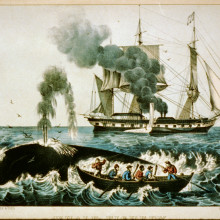
22:49 - Whaling logs help us dive into past climates
Whaling logs help us dive into past climates
with Dinah Molloy Thompson, Scott Polar Research Institute
Sarah - When we want to study our changing climate and how things might change in the future, we need to look at what has happened in the past. There are several methods that researchers use from ice cores to tree rings, but what if we want to look at more recent changes from the last couple of hundred years or so?Most of the methods aren't accurate enough for recent history, and some of the most recent data like the Keeling curve, measuring CO2 levels don't go back far enough.
Now we have data from an unlikely source - the logs of whaling ships that used to set out into the Arctic waters in the 18th and 19th centuries.
Dinah Molloy Thompson is from the Scott Polar Research Institute here in Cambridge and I caught up with her to find out more about these whaling logs. But to start off with, why were these ships going out to catch whales in the first place? Dinah explains.
Dinah - Well, if you think about it there wasn't much in the way of oil, lighting was 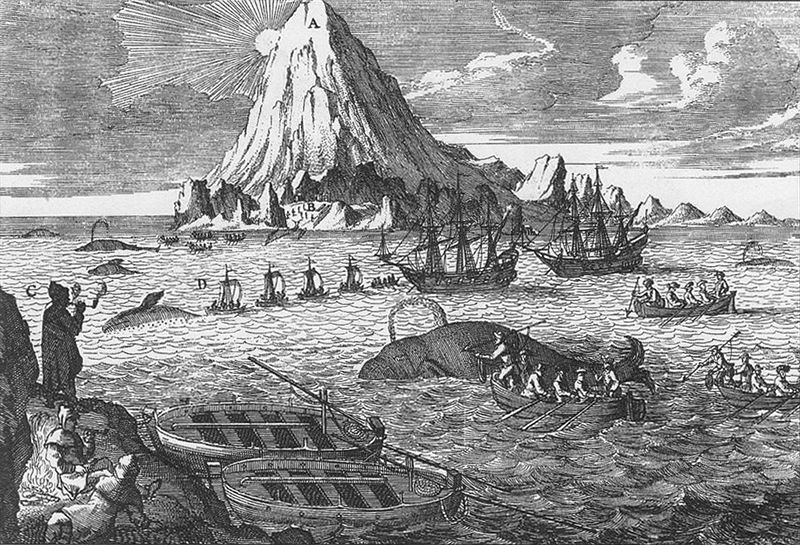 by tallow which is the fat of animals, and they discovered many, many centuries ago that oil from whales could be extremely valuable in all sorts of commodities, as pharmaceuticals, making butter, margarines if you like. And of course whaling began to provide Britain particularly with the raw materials for a whole industry that was building within the industrial revolution.
by tallow which is the fat of animals, and they discovered many, many centuries ago that oil from whales could be extremely valuable in all sorts of commodities, as pharmaceuticals, making butter, margarines if you like. And of course whaling began to provide Britain particularly with the raw materials for a whole industry that was building within the industrial revolution.
These were extraordinarily brave men. They went up to the Arctic in clothing that we wouldn't even go for a Sunday walk in these days. No oil skins. And they braved their way up there, sometimes perhaps starting in March and wouldn't come back 'til August. And they were extraordinarily good sailors, much to the interest now, because people didn't understand that these people were such goo sailors. They had to bed to get there and back, to navigate their way there and back, and highly disciplined. So it was a completely different way of sea life.
Sarah - I suppose now if we considered people who go out whaling it's very much from an environmental point of view and from a conservation and animal-lover point of view, the people who go out whaling are quite looked down upon and frowned upon. But back there was it that they were really well respected they were excellent seamen, they were so brave to be going out in these dangerous conditions, so what is seen as something that was seen as a very brave, impressive thing to go and do?
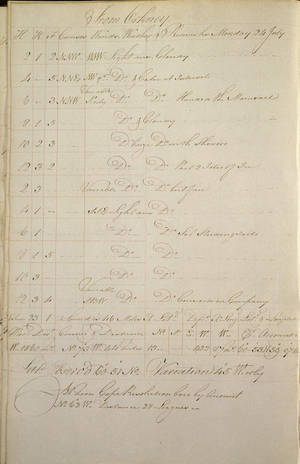 Dinah - It was indeed. Within the local communities, say of Whitby or Hull, the whole community would be involved in it. In fact a boat would be owned maybe by 40-50 people which would provide the pensions for the widows. And the whalers and their children and their families were a major part of the community then.We have a completely different attitude towards animals now then we had then of course.
Dinah - It was indeed. Within the local communities, say of Whitby or Hull, the whole community would be involved in it. In fact a boat would be owned maybe by 40-50 people which would provide the pensions for the widows. And the whalers and their children and their families were a major part of the community then.We have a completely different attitude towards animals now then we had then of course.
According to one of the great whalers of the time MR William Scoresby, who became a clergyman at the end of his days and was a very religious man, he viewed the whales as being put their by god for the good of man not to be cruel to, but to be used for man. So, a completely different attitude. And of course the abundance of them was amazing and they didn't understand that what they were doing would diminish the population to below a critical mass which they couldn't recreate again.
So nowadays of course we have a different attitude altogether. We have any don't need for whales apart from the pleasure of eating their flesh, which I must say is absolutely delightful, it's wonderful, it's like veal. But it's not what we do nowadays. So of course it's frowned upon.
Helen - It's really interesting that we do have a very different attitude towards whales than we do towards anything else that lives in the oceans. The fact that we had this moratorium introduced recently, and that we're a long way off doing something like that for even really endangered species like bluefin tuna.Apparently back in the eighties, it was around the time we were discovering that whales have these amazing songs, and they're very intelligent, and I think that brought us much closer to whales. So I do think we have this pretty bad notion of someone who goes out and hunts whales, when it's just the same as anything else that lives in the sea really.
Sarah - Dinah's point about how the whalers were a real central part of the community, these ships were owned by several families, it was a really important part of life back then. Things have really changed obviously that's not the view we have of people now.
But how do we move from thinking about whales and whalers and why they were going out, to how on earth these logs that they were taking give us information about climate?
Dinah - Well in their logs they wrote not just about the whales that they caught and who caught them and how they caught them, and so forth, they also of course recorded the wind directions and the wind strengths, but they would also record the weather conditions. So we would know roughly where they were, with the little matter of longitude which of course was a problem, but their latitude was good. So we had a good idea roughly from the log as to where they were, and how much ice was about them and what kind of ice was about them. Because they would describe it, they would say, there's streams of ice, thick ice, can't get through ice, ice floes, whatever it was, they would describe. And if you're looking at that over a period of about 100 years you can begin to map it - roughly - and roughly is sufficient if you're looking at climate rather than weather.
Sarah - So why did they take such detailed logs?
Dinah - First of all, the wind direction and wind speed were absolutely vital. It  would be important for them because then they would know roughly what was happening to the weather conditions, and what to expect say further NE or wherever it was. And which way they could go, whether they could go up to a bay that they used the previous year that they got whales in, or they couldn't go. Because it was square rigged, so they're manoeuvrability was limited. They couldn't get as close to the wind, or anything like that.
would be important for them because then they would know roughly what was happening to the weather conditions, and what to expect say further NE or wherever it was. And which way they could go, whether they could go up to a bay that they used the previous year that they got whales in, or they couldn't go. Because it was square rigged, so they're manoeuvrability was limited. They couldn't get as close to the wind, or anything like that.
So they needed to know what the wind was doing.
And as far as ice was concerned, they would put that down because they could see if there was a stream of ice coming down from the north they could interpret enough as to what might be happening further north of them, for example.Perhaps what was more important at the time, not so much about the content, but the fact that they actually have to do it, or did it, the government devised a scheme of what they described as Bounty. IN order to encourage the whaling industry, the whaling industry became very important, the commodities were important to industry, so they had to encourage it. And to encourage it they offered so many, for example at the height of it, it was 40 shillings per tonne, at the tonnage of a boat. A boat might be anything from 300-500 tonnes. And the idea was that that Bounty would help to reinforce the hull so that they could get through the ice.
But when they came back to their home base, they had to show their log in order to receive their bounty. Now it wasn't based on the number of fish they'd caught, it was simply based on the fact that they had a log that conformed to what was required.
Sarah - So much like the farming subsidies that we have today, the government actually supported the whaling industry. But if the whalers had to fill in their logs to get that bounty, you might perhaps think they might not be the most accurate guide to climate. So how do researchers like Dinah make sure that the log accounts of wind and ice and weather are accurate?
Dinah - Of course you can never be sure of anything like that. But that was the most authentic information that you were going to have. Now there is a thing that you can do and that is to validate the information which in fact is what I was actually interested in doing. And if you get two boats together roughly in the same area, they'd see each other so there would be something in the log that said "saw Resolution from Whitby today". If you've got Resolution's log you can go there and it may say "saw Bounty from Hull today" then you know the two boats have seen each other.
So then you begin to compare what they've written in their logs. And if they're completely different you begin to think, hmmm I wonder. But in fact they turn out to be sufficiently similar to say yes they are all doing the same thing. And also the terms that they used, when you convert the terms into say a numeric value you find that they are all saying, using the same terms, when they see the same thing, the same state of water, same state of wind. So, in fact I finished my thesis on this very issue about validating the dating so that we can know that what they say is sufficiently good to use for solid data.
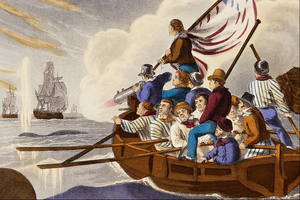 Sarah - And actually some even cooler cross-referencing that Dinah managed to do involved the readings in the logs about the state of the sky. In order to figure out where they were the whalers would take sextant readings using the sun. But if they couldn't see the sun they'd write something in the log like "sun obscured". And Dinah found there was actually a dip around 1816 where a lot of records contained the words "sun obscured" or "sun obscure". So she went off to her history books and found that they coincided with "the year without a summer", which is what 1816 was known as because it was caused by the 1815 eruption of the Tambora volcano, spewing these huge amounts of ash into the air and effecting world climate. So the records are actually pretty accurate.
Sarah - And actually some even cooler cross-referencing that Dinah managed to do involved the readings in the logs about the state of the sky. In order to figure out where they were the whalers would take sextant readings using the sun. But if they couldn't see the sun they'd write something in the log like "sun obscured". And Dinah found there was actually a dip around 1816 where a lot of records contained the words "sun obscured" or "sun obscure". So she went off to her history books and found that they coincided with "the year without a summer", which is what 1816 was known as because it was caused by the 1815 eruption of the Tambora volcano, spewing these huge amounts of ash into the air and effecting world climate. So the records are actually pretty accurate.
Helen - So how do we use these records once they've been found?
Dinah - My role, I'm not a meteorologist, is to give back to the meteorologists and climatologists data that they can use backwards and forwards in their climate models, which will begin to show us the movement of weather systems, things like the North Atlantic Oscillation, which is quite important to us, which we think oscillates every 12 years, but we haven't got much data on that. But this will certainly bring an awful lot more data on the periodicity of that.
What I'm trying to do is to prepare data which has validity which is understood. There is a lot more to be done. We've a lot more data to be found. We've just set up a new project which is being funded by Leverhulme, which is called Arc Doc, and it is going to try and find as many logs and possible particularly in the Arctic.
And I'm hoping to extend the research so that we can not just get British whaling logs, but there's Norwegian, Dutch, Danish, a lot of American ones and get the images of them and digitise them, and extract the data so that we'll have a very large database of information available to mathematicians.
These are terribly important when we are looking at our climate because all our climate ideas are extrapolated from earlier records. And while ice cores are interesting they don't give us the immediate information that we want. So the research will certainly last my lifetime, and more.
Find out more:
ARCdoc
British Antarctic Whaling
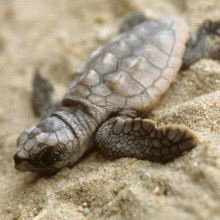
35:19 - Critter of the month - Loggerhead turtle
Critter of the month - Loggerhead turtle
with Wallace J. Nichols, California Academy of Sciences
My name's J Nichols and I'm a research associate at the California Academy of Sciences. And if I was going to be a marine animals, I'd be a loggerhead sea turtles. And not just any loggerhead sea turtle but a North Pacific loggerhead sea turtle.
I would be a loggerhead sea turtle would was swimming from the coast of Mexico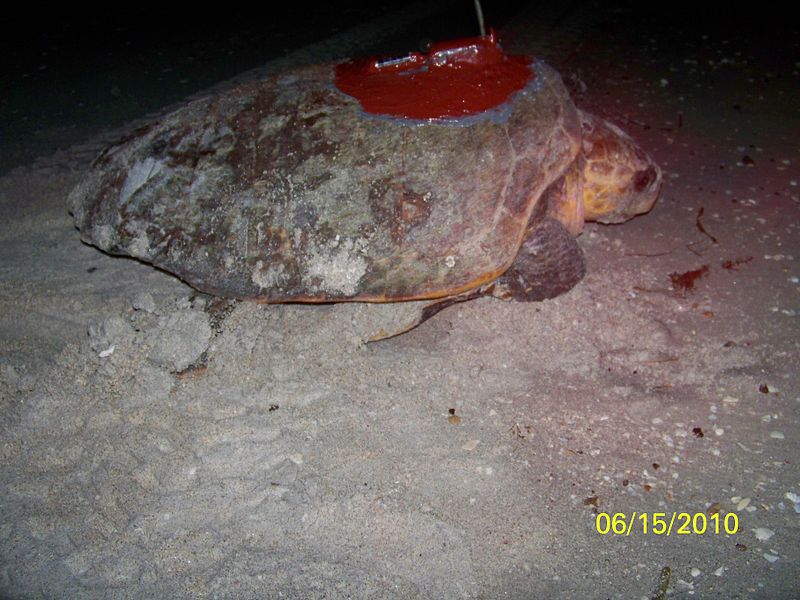 to Japan, and I would have a satellite transmitter attached to my back and I'd have a little camera attached to my back, so that I could share my entire journey with the whole world. So that people could see what was going on out in the middle of the Pacific Ocean. They could see what was going on with the life out there, they would see what's going on with the plastic out there, and the fishing activities. And they could just share the entire journey home from Mexico to Japan.
to Japan, and I would have a satellite transmitter attached to my back and I'd have a little camera attached to my back, so that I could share my entire journey with the whole world. So that people could see what was going on out in the middle of the Pacific Ocean. They could see what was going on with the life out there, they would see what's going on with the plastic out there, and the fishing activities. And they could just share the entire journey home from Mexico to Japan.
Find out more
Wallace J. Nichols










Comments
Add a comment